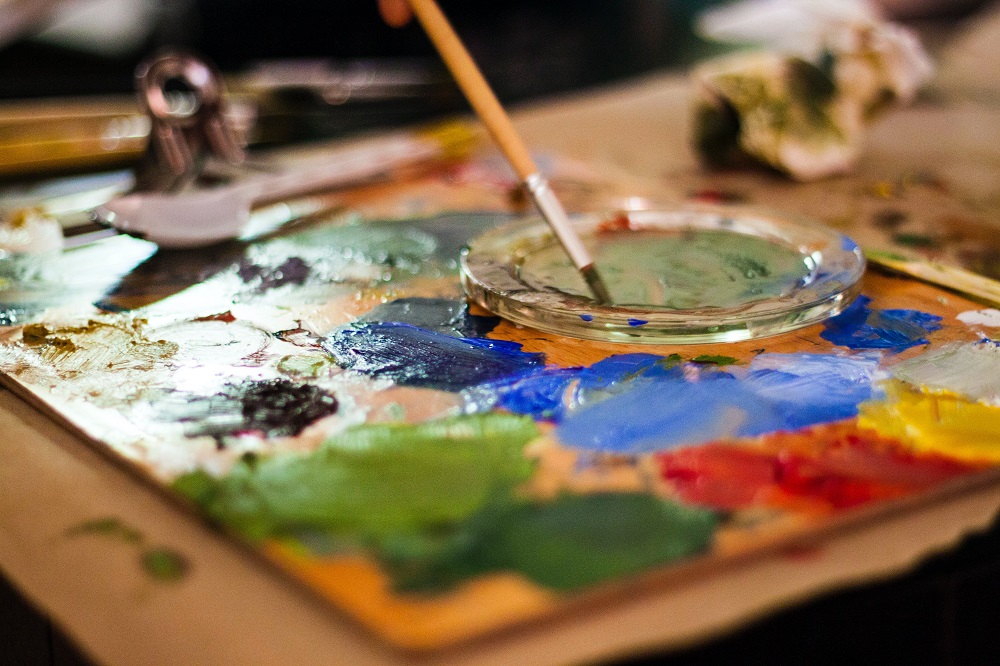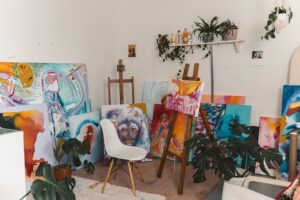Are you tired of using the same old color combinations in your art projects or home decor? Do you feel like your colors always seem to clash instead of complement each other? Well, fear not! The art of mixing colors is a skill that can be learned and mastered. In this blog post, we’ll explore tips and techniques for creating beautiful color combinations that will make your artwork or living space truly pop. So grab your paintbrushes or design swatches, and let’s dive into the wonderful world of color mixing!
An Introduction to Color Theory
Color theory is the study of how colors interact with each other. It helps artists to understand how to mix colors together to create the desired effect.
There are three primary colors: red, yellow, and blue. These colors cannot be created by mixing any other colors together. All other colors are created by mixing different combinations of these three primary colors.
The color wheel is a tool that artists use to help them visualize how colors interact with each other. The color wheel is divided into two halves: the warm half (red, orange, yellow) and the cool half (green, blue, purple). Colors on opposite sides of the wheel are said to be complementary, because they create a contrast when used together.
When mixing colors, it is important to consider their value. Value is the lightness or darkness of a color. A color’s value can be changed by adding either white or black to it – this is called tinting and shading. Tinting a color makes it lighter, while shading a color makes it darker.
The art of mixing colors is not an exact science – there is no one “right” way to do it. Trial and error are often necessary in order to find the perfect combination for your project. However, following some basic guidelines will help you get started on your way to creating beautiful color combinations!
The Color Wheel and Its Use in Mixing Colors
The color wheel is an essential tool for artists who want to mix colors. It can be used to create a wide variety of color combinations, from subtle hues to bright and bold colors.
There are two types of color wheels: the primary color wheel and the secondary color wheel. The primary color wheel is made up of the three primary colors: red, yellow, and blue. The secondary color wheel is made up of the three secondary colors: orange, green, and purple.
Both wheels can be used to create a variety of color combinations. For example, if you want to create a light pink color, you could mix equal parts of red and white on the primary color wheel. Or, if you want to create a dark purple color, you could mix equal parts of blue and red on the secondary color wheel.
The key to mixing colors is to experiment and find the combination that you like best. There are no rules when it comes to mixing colors – just have fun and see what you can create!
Primary, Secondary, and Tertiary Colors
The world of color can be divided into three basic categories: primary, secondary, and tertiary colors. By understanding the difference between these colors and how they work together, you can create beautiful color combinations in your art.
Primary colors are the building blocks of all other colors. They can’t be created by mixing other colors together and are typically found in nature. The three primary colors are red, yellow, and blue.
Secondary colors are created by mixing two primary colors together. For example, orange is created by mixing red and yellow together, while purple is made by mixing blue and red. There are six secondary colors: orange, green, purple, pink, brown, and gray.
Tertiary colors are created by mixing a primary color with a secondary color. For example, you would get tertiary colors like yellow-orange or red-purple by mixing a primary color with the secondary color that sits next to it on the color wheel. There are six tertiary colors: yellow-orange, red-orange, red-purple, blue-purple, blue-green, and yellow-green.
Complementary Colors

Complementary colors are those that are opposite each other on the color wheel. Mixing these colors together creates a high-contrast, attention-grabbing look.
To mix complementary colors, start by choosing two colors that are opposite each other on the color wheel. Then, mix a small amount of one color with a larger amount of the other. The ratio of colors will depend on how intense you want the final color to be.
For a more subtle effect, try using analogous colors – those that are next to each other on the color wheel. Mixing these colors together will create a softer look.
Achieving Balance in Your Color Mixes
In order to create beautiful color mixes, it is important to achieve balance in your colors. Achieving balance in your color mixes means using a variety of different colors that compliment each other. It is also important to use a variety of tones and shades in your color mixes. When creating your color mixes, you should start with a light color and then add darker colors until you achieve the desired balance. You can also use a variety of textures and patterns in your color mixes to add interest and dimension. By taking the time to achieve balance in your colors, you will create stunning results that are both eye-catching and unique.
Advanced Tips and Techniques for Mixing Colors
When it comes to mixing colors, there are a few advanced techniques that can help you create even more beautiful combinations. First, when mixin lighter and darker colors, always start with the lightest color first. This will help you to better gauge the ratio of light to dark that you want in your final mixture.
Second, when mixing colors that are next to each other on the color wheel (such as blue and purple), try using a limited palette of just three or four colors. This will help to keep your mixtures from becoming muddy.
Finally, don’t be afraid to experiment! Try mixing colors that you wouldn’t normally think go together. You might be surprised at the results. With a little practice, you’ll be able to mix colors like a pro!
Conclusion
Mixing colors is a creative and fun activity that can be enjoyed by both experienced painters and beginners alike. With our tips and techniques, we are sure you will find the perfect color combination for your art project or fashion look. Whether you’re mixing classic primary colors for a playful look or experimenting with unexpected shades to create something unique, understanding the basics of color theory will help you achieve beautiful results every time. So go ahead, give it a try – have fun creating!








